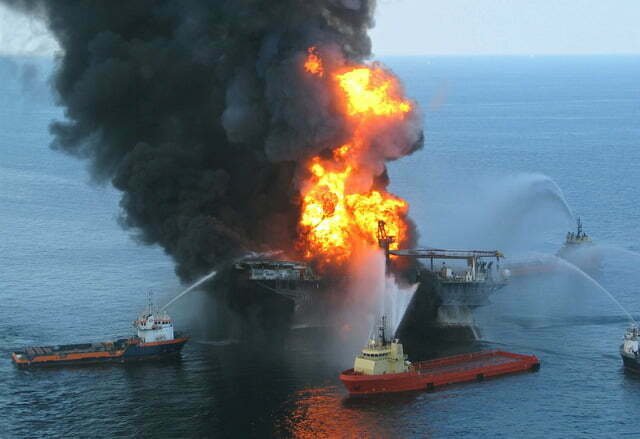
In 2010, Captain Hung Nguyen led the Department of Homeland Security and Department of the Interior’s joint investigation into the Deepwater Horizon explosion, which resulted in the largest oil spill in the U.S. History. Many of the recommendations from Captain Nguyen’s report have been implemented to improve offshore oil and gas exploration and production activities.
Captain Nguyen, can you please tell us a little bit about your background?
I have over thirty years experience promoting operational and HSE excellence. During my twenty-six-year career with the U.S. Coast Guard, I had the privilege to serve as a Co-chair for the 2010 Deepwater Horizon casualty investigation. Since my retirement from the Coast Guard, I have served as a TSA Federal Security Director and a Director, Global HSE Programs, for a major offshore drilling company. Currently, I am a senior consultant with an emergency response support company.
You were Co-Chair for the Deepwater Horizon Investigation Team – what did the role entail?
I was responsible for organizing and leading a multi-discipline, multi-agency investigation into a serious marine casualty that resulted in the death of 11 people, a vessel sinking, and the largest oil spill in the U.S. history. The team held seven public hearings, called over 80 witnesses, issued more than 90 subpoenas and collected over 400,000 pages of evidence. We delivered the Coast Guard’s portion of the investigation report by the first anniversary of the incident.
What were the most significant recommendations that came out of the investigation?
The Joint Investigation Team recommended 52 safety improvements, with the Commandant of the Coast Guard, agreeing to take action on more than 80 percent of them.
The most significant lessons learned from the incident applied to the casualties – as well as increased compliance with the International Safety Management Code, where the role of safety management system failures in recent marine casualties is investigated.
Based on those findings, it’s determined whether a change in the current inspection and enforcement methods is required to increase compliance with the ISM Code.
Another recommendation we made was to pursue the regulatory changes for dynamic positioned vessels, including clear designation of the person in charge under both operating and emergency conditions for all MODUs operating on the U.S. Outer Continental Shelf.
And finally, to work with the IMO to develop a code of conduct for recognized organizations to ensure that verification of all flag state requirements are being conducted properly.
You use CARE to identify casual factors and potential improvements stemming from the Deepwater Horizon incident. What is CARE?
Clarity of mission
• What are the performance expectations?
• What does “Operational Excellence” look like?
• What guides priorities and actions?
Alignment of systems
• Are department management systems operating in silos?
• Are there additional tools needed to promote situational awareness, operational planning and performance reporting?
• Is there a common framework that can be used to promote communication, coordination and collaboration?
Reinforcement of values and standards
• What are shared attitudes and values, goals and practices?
• Are there any organizational dynamics that hamper mission execution?
• What tools can be deployed to strengthen my organization’s culture?
Empowering the workforce
• Are we experiencing the “Bystander Effect”?
• Have we provided the tools and support our workforce need to stop work if necessary?
• How can we create an environment where everyone can be productive and excel?
CARE is the main principle we feel organizations should use to minimize risk and enhance compliance. When I was Commander with the Coast Guard Sector Ohio Valley, I implemented a Baldrige Based integrated management system to enhance the organization’s operational readiness and performance.
These CARE principles helped ensure effective implementation and continuous improvement.
You’ve said that operational excellence requires participation and trust from everyone in the organization. The level of participation depends on trust and is the key factor in promoting communication, coordination, and collaboration. Can you explain further?
A tool in my sea bag is Stephen M.R. Covey’s book “The Speed of Trust”. In determining organizational results, Mr. Covey pointed out the importance of the hidden variable “trust” in the traditional business formula. He showed that “you could have an excellent strategy and a strong ability to execute, but still get derailed by low trust.”
In your opinion, has the Oil and Gas industry made significant improvements when it comes to safety and environmental excellence since the Deepwater Horizon Incident?
In terms of governance, there have been significant improvements. For example, the 2010 U.S. Bureau of Safety and Environmental Enforcement’s SEMS Rule provides a framework to reduce the likelihood of accidents, injuries and spills.
Additionally, the 2013 European Commission’s Offshore Directive places accountability for preventing a major accident at the top of an organization.
In terms of safer operations, I think the 2015’s Arctic drilling season is a good indicator of how well the industry has complied to new regulatory requirements.

The past two years we have seen a significant drop in the price of oil, resulting in workforce and budget cuts. At the same time safety, environmental and regulatory pressures are increasing. How can CARE help oil and gas companies improve efficiency and productivity?
Safe operations should be a core value for any organization. The CARE Principles optimize safety efforts by getting everyone on the same sheet of music and making the best use of resources.
Who is Captain Hung Nguyen?
Captain Nguyen was the first Vietnamese-born Coast Guard Academy graduate. He is a former U.S. Coast Guard Captain Co-chair, Deepwater Horizon Joint Investigation Team.
He earned a Bachelor of Science degree in Chemistry from the U. S. Coast Guard Academy, where he achieved the distinction as an Academy Scholar. Captain Nguyen also earned a Master of Science degree in Chemical Engineering from Rice University, and a Master of Business Administration from Averett College.
He completed the Council for Excellence in Government Fellowship and the Naval Postgraduate School’s Homeland Security Executive Leaders Program. From 2007 to 2010, Captain Nguyen served as Commander, Sector Ohio Valley. In 2008, Sector Ohio Valley won the Coast Guard Innovation Award in Management. In 2009, the Sector earned the first Coast Guard Alexander Hamilton for Excellence in the Large-Operational-Ashore category.
On April 27, 2010, Department of Homeland Security and Department of Interior designated Captain Nguyen as the Coast Guard Co-chair for the DHS-DOI joint investigation into the mobile offshore drilling unit Deepwater Horizon casualty, which resulted in the death of eleven people, the vessel’s sinking, and the largest oil spill in the U.S. history.
Many of the recommendations from Captain Nguyen’s report have been implemented to improve offshore oil and gas exploration and production activities. Coast Guard team members were awarded the 2012 Congressman James Sener Award for Excellence in Marine Investigation.
Since his retirement from the Coast Guard, Captain Nguyen has served as a Transportation Security Executive and Director, Global HSE Programs. In these capacities, Captain Nguyen successfully developed and implemented many process safety management tools that enhanced his organizations’ performance excellence.



